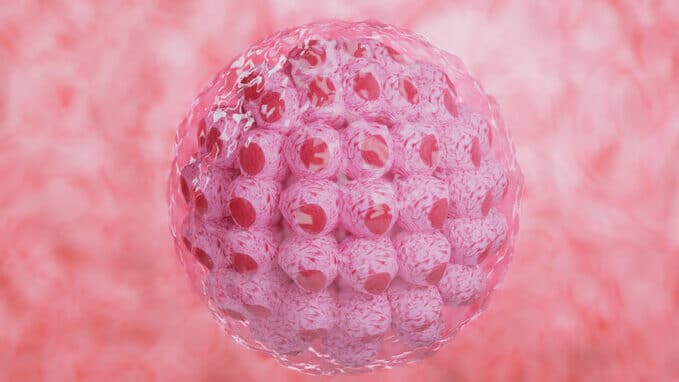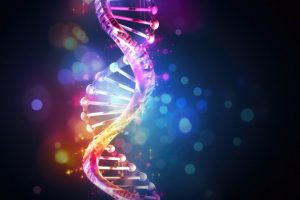A new discovery by researchers at the RIKEN Center for Biosystems Dynamics Research (BDR) in Japan is turning decades-old assumptions about DNA replication on their head. The experiments, led by Ichiro Hiratani and colleagues, show that DNA replication in early embryos is different from what was previously assumed and includes a phase of instability that is prone to chromosome copying errors. Since miscarriages and developmental disorders are often associated with chromosome abnormalities, the results could have implications for the field of reproductive medicine and possibly lead to improved methods of in vitro fertilization (IVF).
Chromosome Copy Errors Lead to Miscarriages and Developmental Diorders
During embryogenesis, the fertilized egg cell divides, as does each new set of daughter cells. By day three post-fertilization, an embryo has undergone three divisions and contains 16 cells. Each cell division is accompanied by DNA replication, ensuring that each daughter cell contains one copy of the entire genome. In their new study, the team of RIKEN-BDR researchers set out to characterize the nature of the DNA replication process in early-stage embryos. They used their home-grown single-cell genomics technique, called scRepli-seq, and applied it to developing mouse embryos. This technology allowed the team to create snapshots of the DNA of individual embryonic cells at different points in time during periods of DNA replication. What they found contradicted what scientists had assumed about DNA replication in embryos.
“We found several specialized modes of DNA replication during early mouse embryogenesis that no one has seen before,” says Hiratani. ‘We also found that genomic DNA is transiently unstable at certain points and that chromosome aberrations are increased.’ Textbooks state that DNA is not replicated all at once. Instead, different regions of a chromosome are duplicated in a specific order. The team’s first discovery was that the replication timing domains observed in mature cells only come into existence when an embryo has four cells. This means that, unlike all other cells in a later body, DNA in one- and two-cell embryos is replicated evenly, not sequentially.
Each time a portion of a chromosome unwinds for replication, regions of DNA are unzipped, forming a structure that looks like a fork. For replication to continue, the fork must move along the DNA strand, unzipping copied regions and unzipping the next section. The team’s second discovery was that the rate of forking is much slower at the 1-, 2- and 4-cell stages than it is after the 8-cell stage of embryogenesis. The four-cell embryo can now be considered a transitional stage, in which the uniform DNA replication becomes sequential, while still exhibiting the slow fork movement characteristic of one- and two-cell embryos. By contrast, eight-cell embryos are much more like mature cells, with sequential replication and rapid fork movement.
Better Strategies to Minimize Chromosome Anomalies Shortly After Fertilization
Errors in DNA replication in the first few days after fertilization often lead to chromosome irregularities, such as extra copies, missing copies, breaks in copies, or incomplete copies. Some of these copying errors lead to miscarriages, while others lead to developmental disorders such as Down syndrome, also known as trisomy 21. The team’s third discovery was that the frequency of chromosome copy errors in embryos was transiently increased in the early stages, most frequently at the 4-cell stage.
The researchers used scRepli-seq again, this time to detect chromosome copy number abnormalities. They found that there were very few errors during the transition between the 1- and 2-cell stages or between the 8- and 16-cell stages. On the other hand, 13% of cells had chromosome abnormalities during the transition between the 4- and 8-cell stages, probably due to copying errors during the 4-cell stage.
Further tests suggested that the copying errors at this stage are related to the slow-moving forks. “Our results raise many new questions,” says Hiratani. ‘For example, whether this series of phenomena is evolutionarily conserved in other species, including human embryos. And what is the further fate of cells with chromosome anomalies?’ This discovery could not only guide basic research in the future, but also help fertility clinics develop better strategies to minimize the chromosome abnormalities that often occur in the first few days after fertilization.




